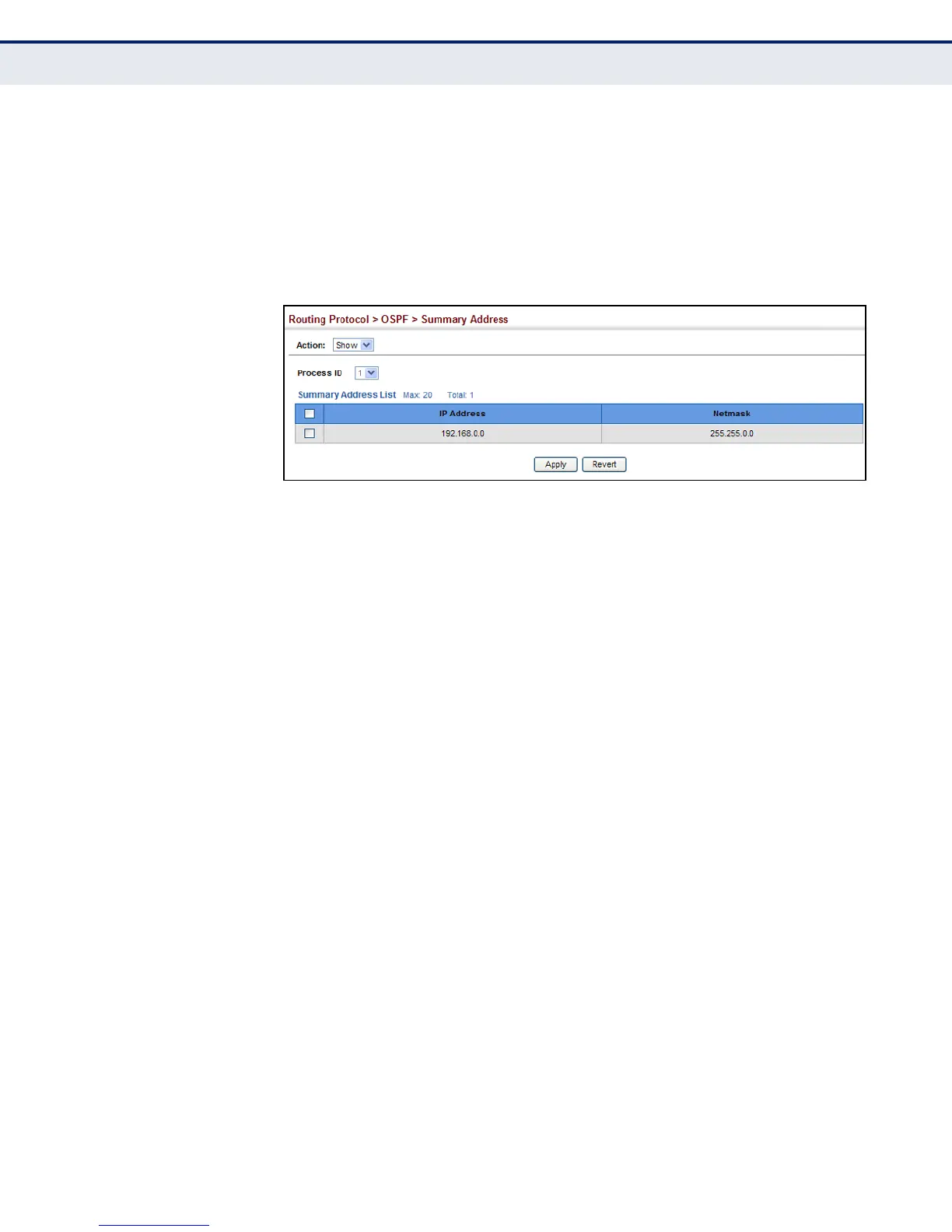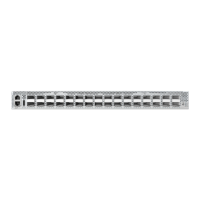C
HAPTER
20
| Unicast Routing
Configuring the Open Shortest Path First Protocol (Version 2)
– 525 –
To show the summary addresses for external routes:
1. Click Routing Protocol, OSPF, Summary Address.
2. Select Show from the Action list.
3. Select the process ID.
Figure 348: Showing Summary Addresses for External Routes
CONFIGURING OSPF
INTERFACES
You should specify a routing interface for any local subnet that needs to
communicate with other network segments located on this router or
elsewhere in the network. First configure a VLAN for each subnet that will
be directly connected to this router, assign IP interfaces to each VLAN (i.e.,
one primary interface and one or more secondary interfaces), and then use
the Network Area configuration page to assign an interface address range
to an OSPF area.
After assigning a routing interface to an OSPF area, use the Routing
Protocol > OSPF > Interface (Configure by VLAN) or (Configure by
Address) page to configure the interface-specific parameters used by OSPF
to set the cost used to select preferred paths, select the designated router,
control the timing of link state advertisements, and specify the method
used to authenticate routing messages.
CLI REFERENCES
◆ "Open Shortest Path First (OSPFv2)" on page 1042
COMMAND USAGE
◆ The Configure by VLAN page is used to set the OSPF interface settings
for the all areas assigned to a VLAN on the Network Area (Add) page
(see page 504).
◆ The Configure by Address page is used to set the OSPF interface
settings for a specific area assigned to a VLAN on the Network Area
(Add) page (see page 504).
PARAMETERS
These parameters are displayed in the web interface:
◆ VLAN ID – A VLAN to which an IP interface has been assigned.

